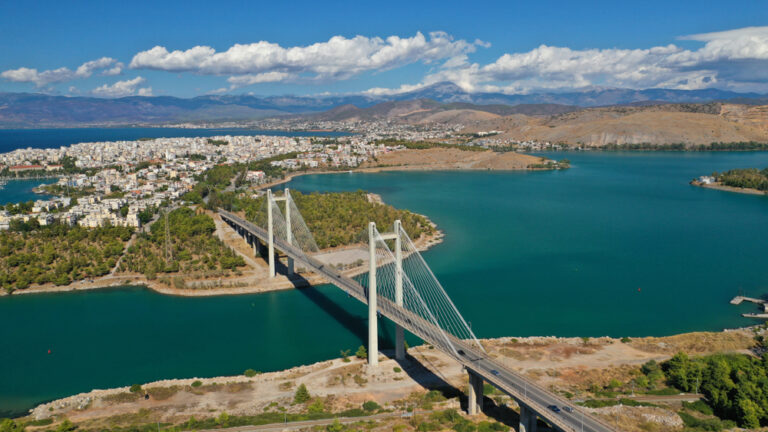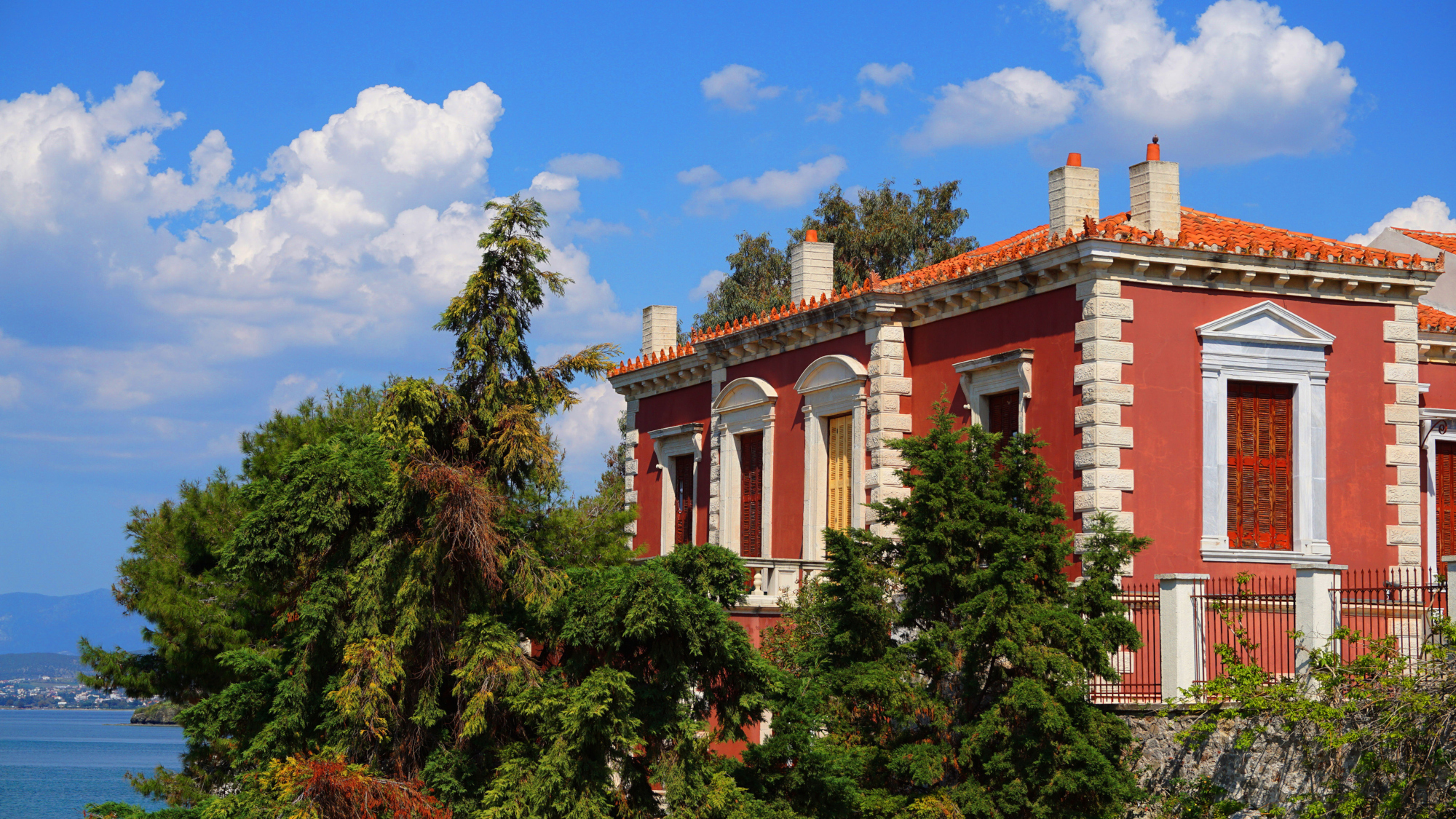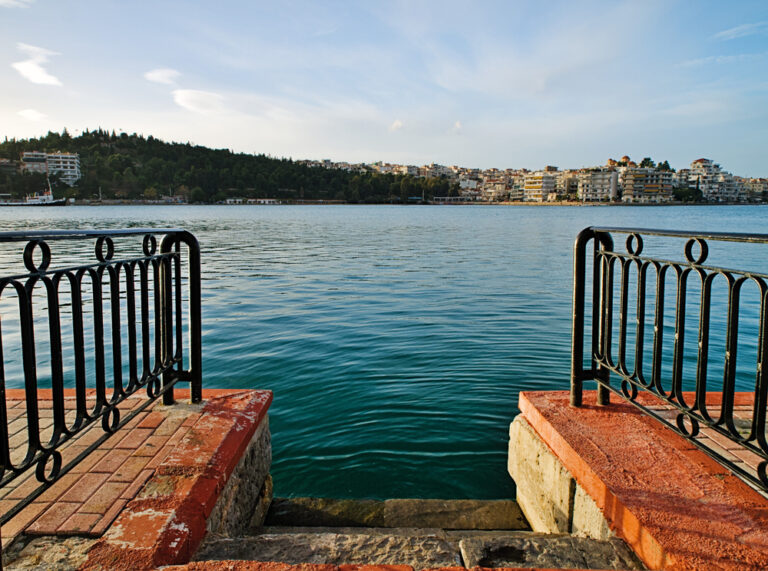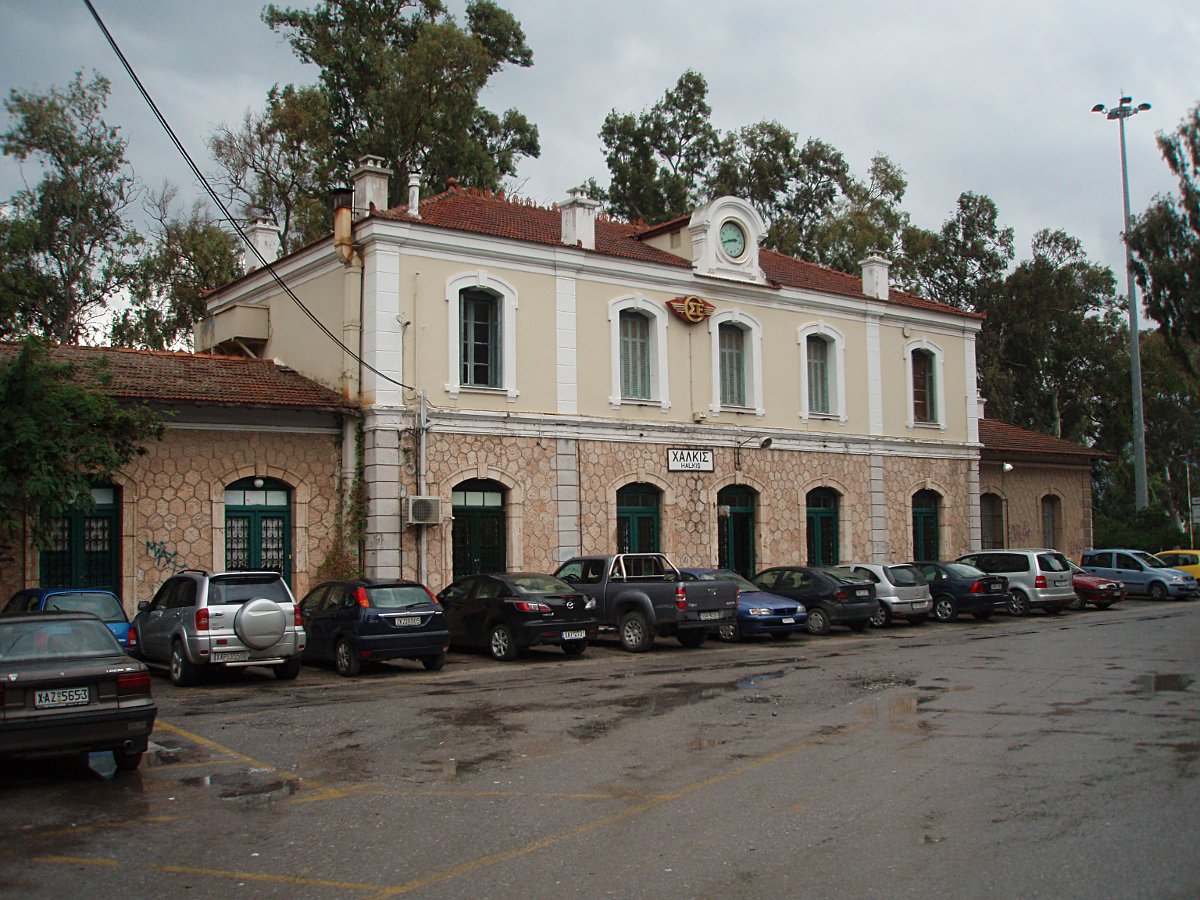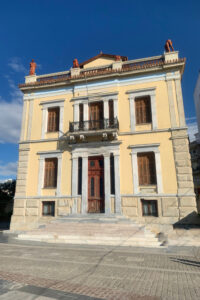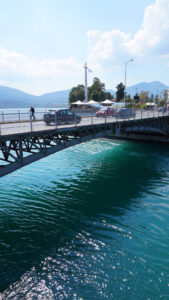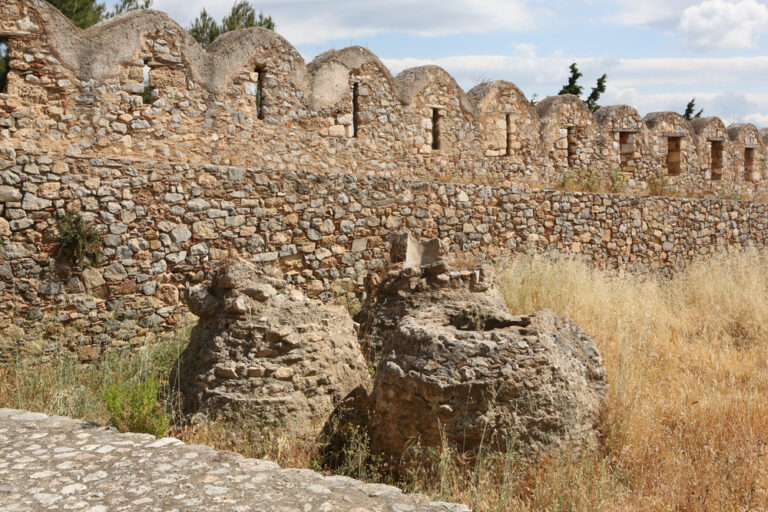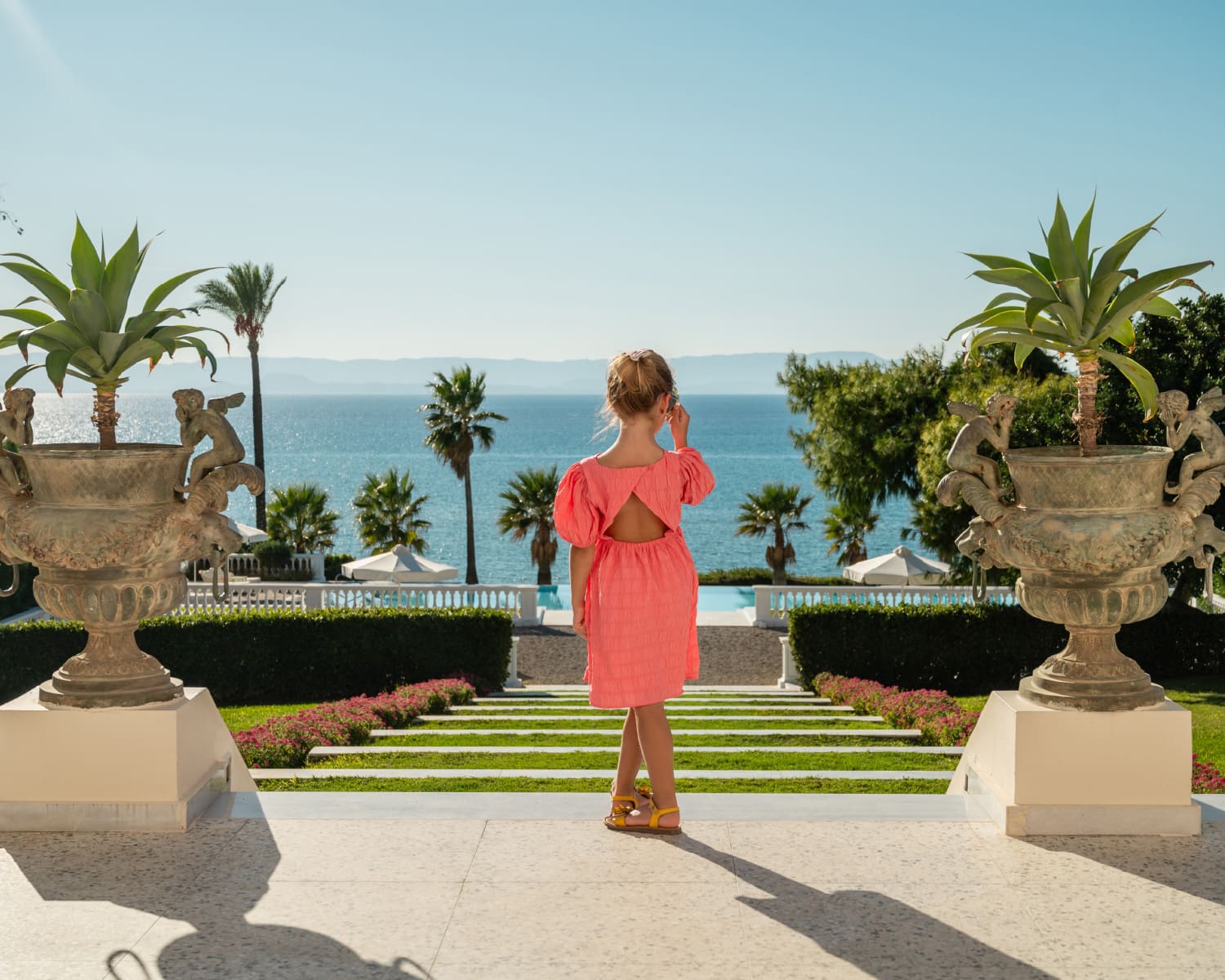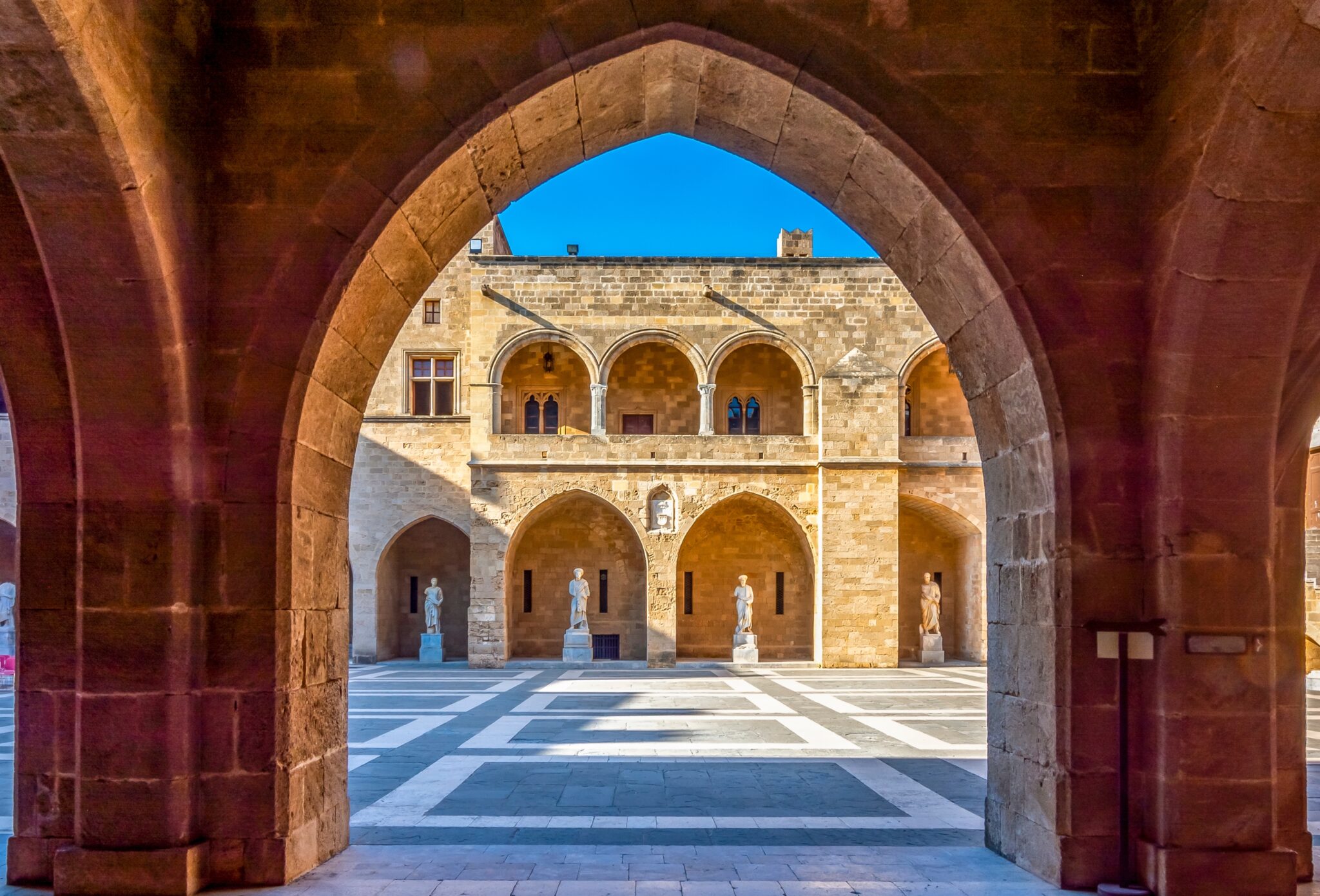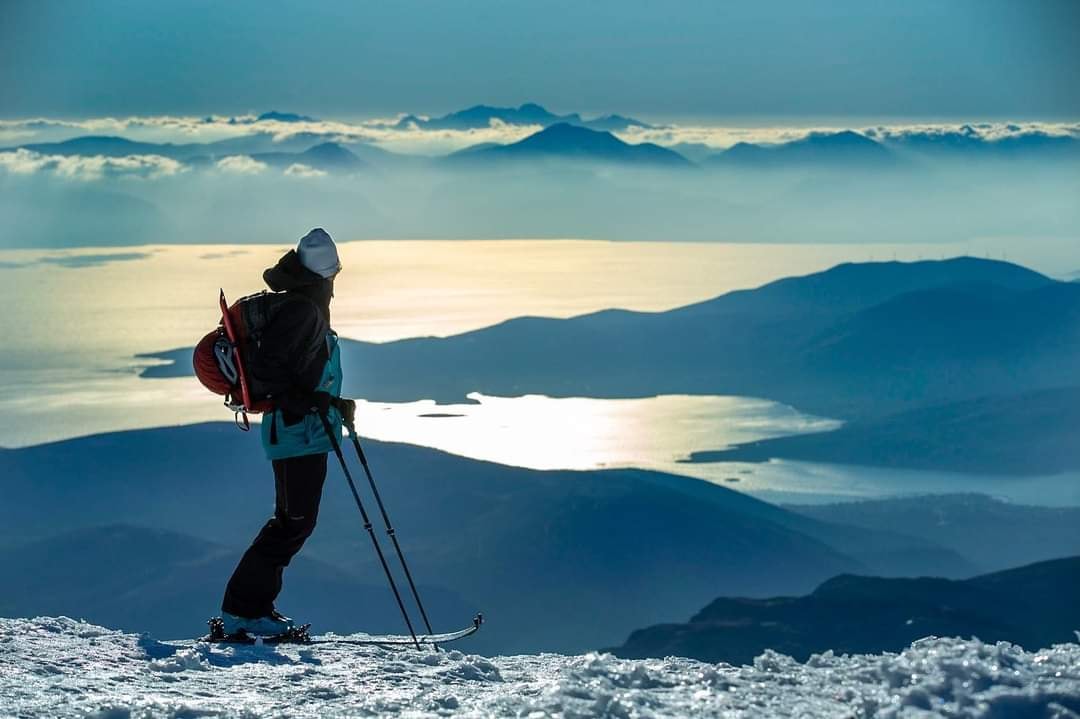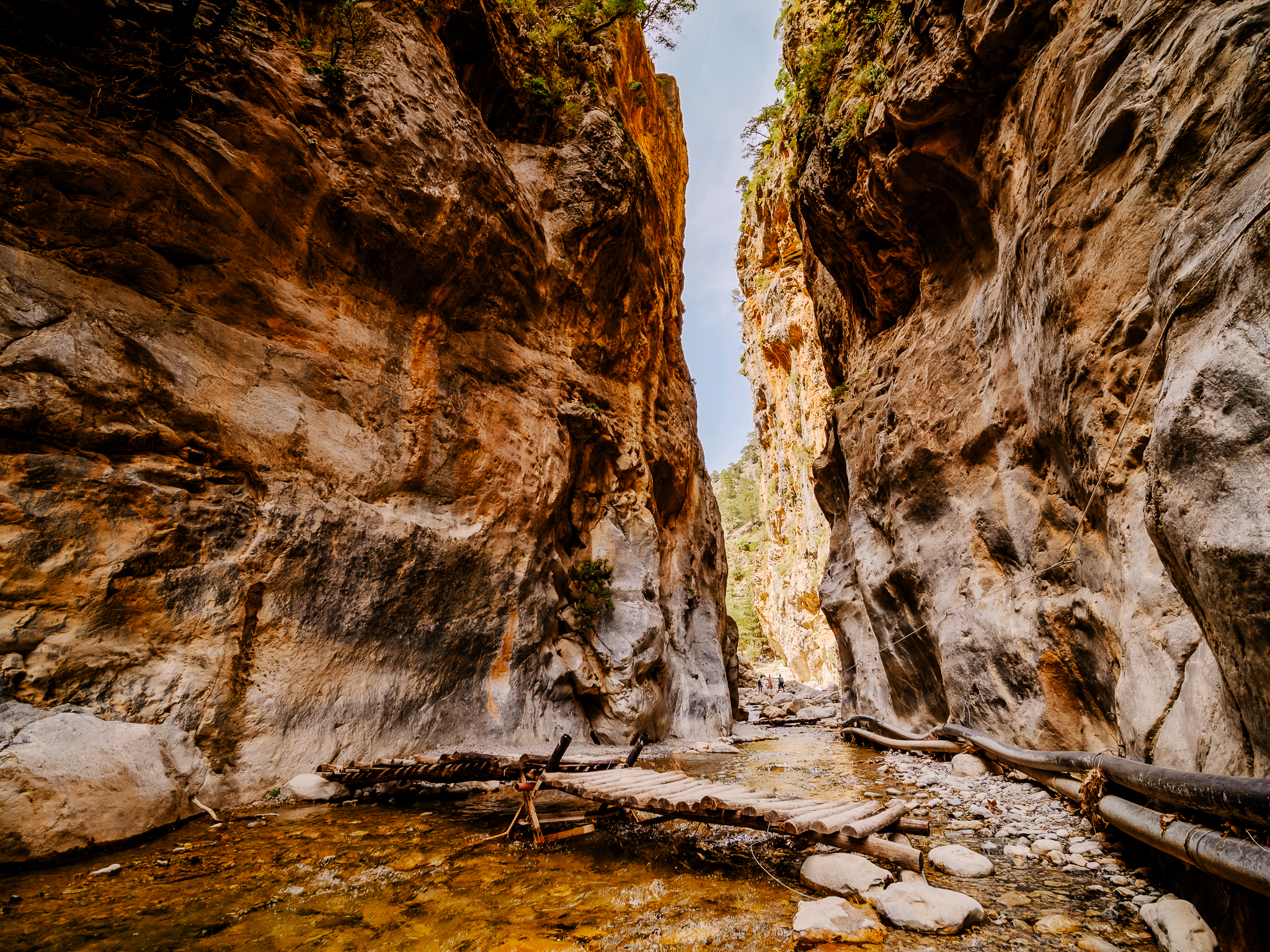The οld retractable bridge, the hi-tech suspension bridge and Euripus’ “crazy waters” with their ever-fickle mood seal the passage from everyday routine to the bliss of a one-day getaway.
On the Evia side, the iconic seaside promenade invites you with all the verve of an island: relaxed fishermen, leisurely strolls, quaint cafés with sea views, ouzo bars, music, lights.
On the landward side, in Boeotia (Viotia), the imposing Karababa (or Kanithos) fortress, surrounded by thick rine forest, marks the town’s quieter side: fewer visitors, less traffic, and the tomb of Yiannis Skaribas (1893 –1984), a great Greek writer and subversive thinker.
The promenade, the old bridge and the purlieus
So everything takes place here. Locals and visitors, old and young, mothers with babies in strollers, rabbleous teenagers, this is where they meet, stroll, date, fall in love, go out for coffee or drinks. By the seashore, between the old bridge and the imposing Kokkino Spiti (Red House), with a midway architectural “stop” at the wondrous vaulted Kochika Mansion the Town Hall, this is where the collective heart of the city beats.
Every afternoon the old bridge opens, allowing boats to pass through the strait – an eye-catching “event”. The bridge’s two halves are retracted in a sliding fashion, allowing passage for those vessels too high to pass underneath, and then reconnect, giving way again to pedestrians and vehicles.
The effects of Euripus’ unique sea tides is another impressive “event”. The Euripus strait’s current changes direction every 6 hours and in between there is an 8minute interval during which the water remains still. However, there are some exceptions to this pattern. Namely, during the two equinoxes (March 21 and September 21) the strait’s current changes without intervals, while at each new moon or full moon the strait’s current can change direction up to 14 times in the same 24-hour period. It is one of the few places where tides are discernable.
The almost surrealistic railway station, located by the sea and the untamed waters, has been standing here since 1905. Rails and waves intertwine gracefully in an uncanny combination.
Leaving the romantic old bridge and the lively promenade, head to the town centre.
Beautiful buildings remain beautiful
Like all Greek urban centres, Chalkida, too, has suffered the post-war fate of contractual consideration and the subsequent omnipresence of ugly apartment buildings. Nevertheless, a few beautiful buildings bearing references to Chalkida’s rich historical past still survive.
Chalkida’s Folklore Museum (4, Skalkota Street, +30 22210 21817) is housed in three huge arched halls in what remains of the legendary Frankish castle Negreponte. Built in the 6th century AD, the byzantine church of Agia Paraskevi is still active after 1500 years. In Pesonton Opliton (fallen soldiers) Square you can see the still standing great Emir Zade Mosque with its impressive dome. The Archaeological Museum of Chalkida (13, El. Venizelou Avenue, +30 22210 25131) is housed in a beautiful neoclassical building built in the early 20th century, while the so-called “House of Statues”, where famous Greek composer Nikos Skalkotas (1904 – 19 September 1949) was born, will probably leave you speechless, as the statues of two men and two women stand proudly on the roof. Built in a Macedonian architectural style, the house of Nikolaos Kriezotis (1785-1853) (Leader of the National Troops of Eastern Greece during the Greek War of Independence), the “Kriezotion”, is equally stunning and well-worth a visit. In its grassy courtyard lies a magnificent fountain made of fragments of Ottoman tombstone columns.
Following the signs for north Evia (on the way to Artaki and Lampsakos for ouzo, tsipouro, fresh fish and seafood) you’ll find yourself at Kamares (arches), the ancient Roman aqueduct, which is still in excellent condition featuring twelve intact vaulted arches and three columns. What did the Romans ever do for us?
Food, coffee and drinks
For many, a trip to Chalkida is has to be topped off with a delicious sortie to one of the many mezedopoleia (eateries serving assorted meze dishes and traditional Greek spirits such as tsipouro and ouzo) in Lampsakos and Artaki. Chalkida is renowned throughout Greece for its fish and Evia on the whole for its fresh produce, so basically any place you plump for you’ll be in for unbeatable, fresh local fare.
“TSAF”, located in the centre of Chalkida, has been inscribed in the town’s culinary DNA for years. Housed in a 1910 listed building, “TSAF” offers a wide variety of fresh seafood (shellfish, crayfish, shrimps, squid, octopus), fish meze and fish. It also boasts a wide selection of tsipouro and ouzo.
“TSAFAKI”, its little sibling, next to the Old Bridge, follows the same course; fresh seafood and fish here too, seafood saganaki, shrimp orzo, a wide variety of ouzo and tsipouro, and several local wine labels. It is located by the sea and enjoys a wonderful view (5, Archiepiskopou Makariou Street, +30 22210 94600). The tiny “Le Petit Savoureux” in pastel colours has a retro feel, outlandish sandwiches -with pastrami, Sicilian mortadella and truffle mayonnaise, pineapple, cheddar and pastrami – but also well-made desserts such as crème brûlée, tiramisu, apple tart with caramel etc. (10, Lykofonos Street, Chalkida, +30 2221 600500).
At “Bohème café bar” you can enjoy a funky cocktail in a fun jazzy setting with views of the straights (1, Platanioti Street, +30 22210 81111), surrounded by jazz posters, musical instruments. Just below the Karababa fortress lies “Xenia Bar Café”, It’s Chalkida“Touristic” bar. Very modern and stylish, boasting a relaxed and youthful atmosphere, it serves up everything from coffee, drinks, modern dishes to great views of Euripus, Chalkida, the Gulf of Evia and the ridges of Mt Dirfi.
read more



